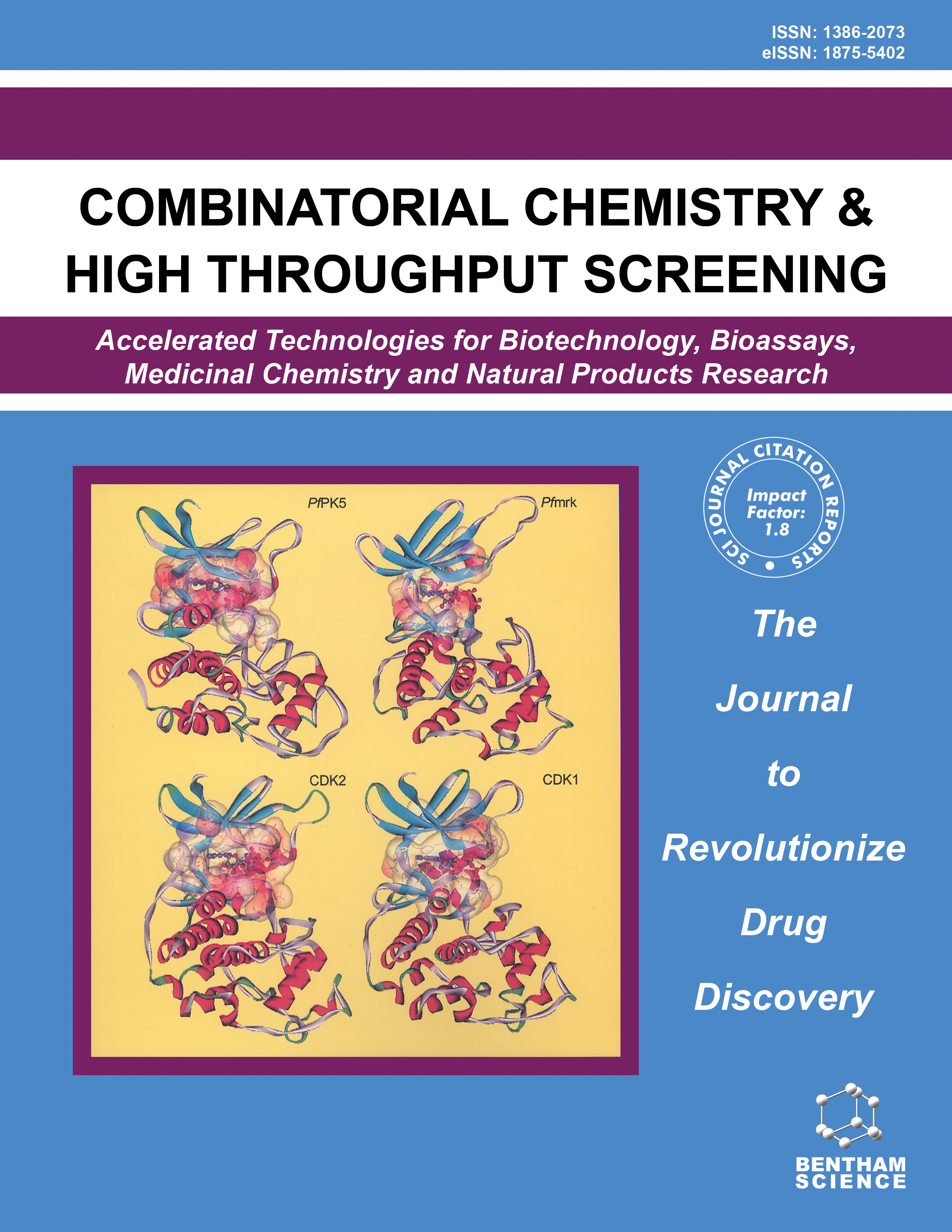- Home
- A-Z Publications
- Combinatorial Chemistry & High Throughput Screening
- Previous Issues
- Volume 8, Issue 3, 2005
Combinatorial Chemistry & High Throughput Screening - Volume 8, Issue 3, 2005
Volume 8, Issue 3, 2005
-
-
Defensins and Other Antimicrobial Peptides: A Historical Perspective and an Update
More LessBy Tomas GanzAntimicrobial peptides are effectors of innate immunity in phagocytes, body fluids and epithelia. In mammals, defensins, peptides with a characteristic six-cysteine framework, are particularly abundant and widely distributed in various animal species and tissues. The first part of this review provides a historical overview of the ideas that led to the current state-of-the-art in antimicrobial peptides, and the second part is Read More
-
-
-
Improving on Nature's Defenses: Optimization & High Throughput Screening of Antimicrobial Peptides
More LessAuthors: D. Raventos, O. Taboureau, P. H. Mygind, J. D. Nielsen, C. P. Sonksen and H.- H. KristensenAntimicrobial peptides (AMPs) are ubiquitous in nature where they play important roles in host defense and microbial control. Despite their natural origin, antimicrobial spectrum and potency, the lead peptide candidates that so far have entered pharmaceutical development have all been further optimized by rational or semi-rational approaches. In recent years, several high throughput screening (HTS) systems have been Read More
-
-
-
Peptoids As Source of Compounds Eliciting Antibacterial Activity
More LessAuthors: Isabel Masip, Enrique Perez-Paya and Angel MesseguerN-Alkylglycine oligomers (peptoids) constitute a family of non-natural peptidomimetics attractive for the early drug discovery process because of their physicochemical features, easy of adaptation to combinatorial chemistry approaches and their proteolytic stability. Consequently, peptoid libraries have found application for discovering hits against a wide diversity of pharmaceutical targets, among which different examples Read More
-
-
-
Molecular Mechanisms of Membrane Perturbation by Antimicrobial Peptides and the Use of Biophysical Studies in the Design of Novel Peptide Antibiotics
More LessAuthors: K. Lohner and S. E. BlondelleAntibiotic resistant bacterial strains represent a global health problem with a strong social and economic impact. Thus, there is an urgent need for the development of antibiotics with novel mechanisms of action. There is currently an extensive effort to understand the mode of action of antimicrobial peptides which are considered as one alternative to classical antibiotics. The main advantage of this class of substances, w Read More
-
-
-
Design of Host Defence Peptides for Antimicrobial and Immunity Enhancing Activities
More LessAuthors: Joseph B. McPhee, Monisha G. Scott and Robert E. W. HancockHost defense peptides are a vital component of the innate immune systems of humans, other mammals, amphibians, and arthropods. The related cationic antimicrobial peptides are also produced by many species of bacteria and function as part of the antimicrobial arsenal to help the producing organism reduce competition for resources from sensitive species. The antimicrobial activities of many of these peptides hav Read More
-
-
-
Cathelicidins - Nature's Attempt at Combinatorial Chemistry
More LessAuthors: Ole E. Sorensen and Niels BorregaardCathelicidins are a family of diverse antimicrobial peptides found in granules of mammalian neutrophils. Cathelicidins are active against a broad range of microbes in different environments. Aside from their antimicrobial activity, cathelicidins possess other biological properties including cytotoxic activity towards mammalian cells. Several studies have shown that the amino acid sequence of cathelicidins can be modified t Read More
-
-
-
Meet The Guest Editor
More LessAlexander Cole has been investigating two aspects of innate host defense. The first area examines the natural ability of human airway secretions to prevent pathogenic bacterial colonization and aims to identify the host substances that mediate the innate resistance to colonization. His group is examining the host defense of the airways of donors who are healthy and donors who are persistent nasal carriers of Staphylococcus au Read More
-
Volumes & issues
-
Volume 28 (2025)
-
Volume 27 (2024)
-
Volume 26 (2023)
-
Volume 25 (2022)
-
Volume 24 (2021)
-
Volume 23 (2020)
-
Volume 22 (2019)
-
Volume 21 (2018)
-
Volume 20 (2017)
-
Volume 19 (2016)
-
Volume 18 (2015)
-
Volume 17 (2014)
-
Volume 16 (2013)
-
Volume 15 (2012)
-
Volume 14 (2011)
-
Volume 13 (2010)
-
Volume 12 (2009)
-
Volume 11 (2008)
-
Volume 10 (2007)
-
Volume 9 (2006)
-
Volume 8 (2005)
-
Volume 7 (2004)
-
Volume 6 (2003)
-
Volume 5 (2002)
-
Volume 4 (2001)
-
Volume 3 (2000)
Most Read This Month
Article
content/journals/cchts
Journal
10
5
false
en

Most Cited Most Cited RSS feed
-
-
Label-Free Detection of Biomolecular Interactions Using BioLayer Interferometry for Kinetic Characterization
Authors: Joy Concepcion, Krista Witte, Charles Wartchow, Sae Choo, Danfeng Yao, Henrik Persson, Jing Wei, Pu Li, Bettina Heidecker, Weilei Ma, Ram Varma, Lian-She Zhao, Donald Perillat, Greg Carricato, Michael Recknor, Kevin Du, Huddee Ho, Tim Ellis, Juan Gamez, Michael Howes, Janette Phi-Wilson, Scott Lockard, Robert Zuk and Hong Tan
-
-
- More Less

